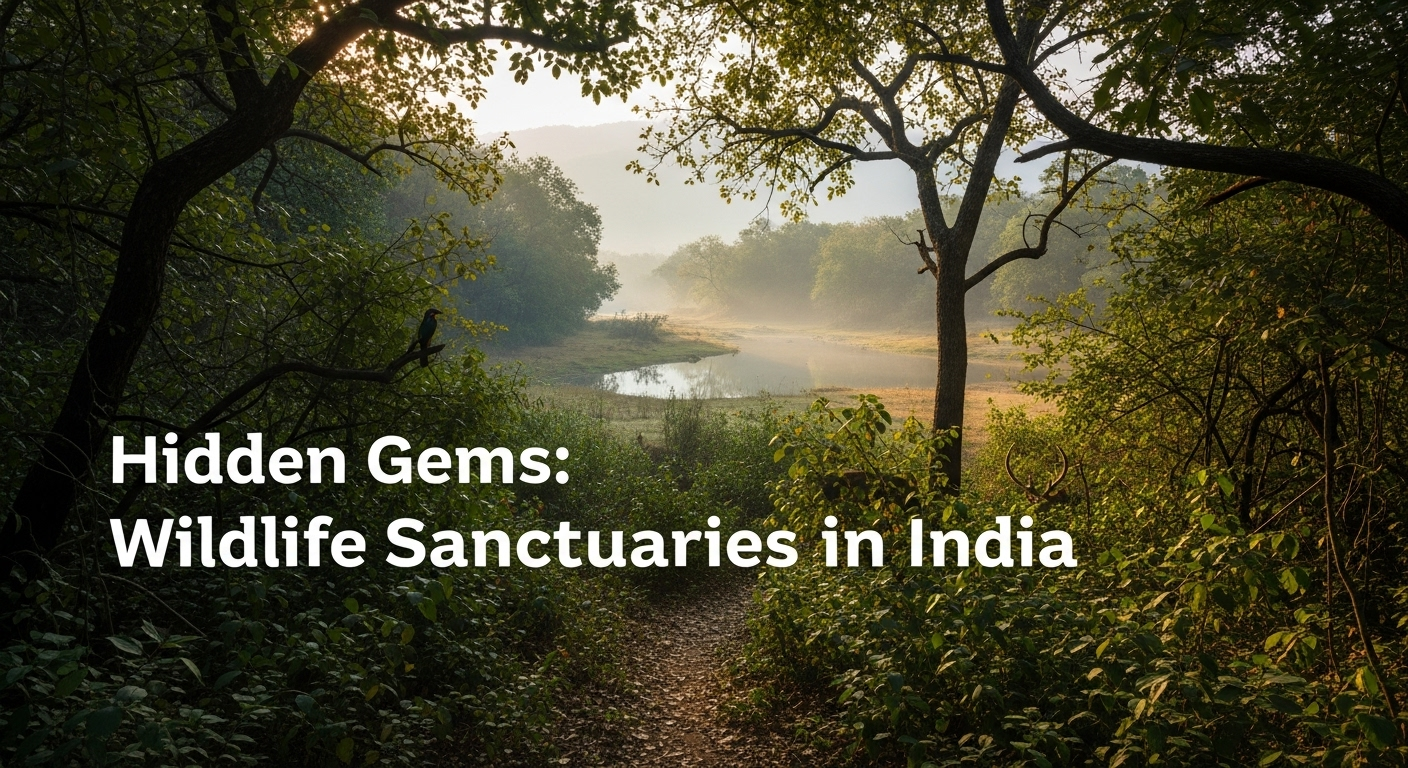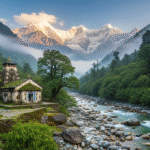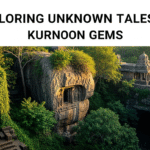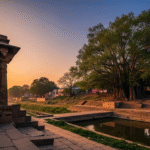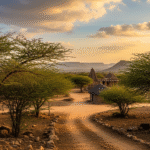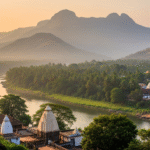India has more than 160 bird kinds and 36 reptile types in Nagzira Wildlife Sanctuary. This is just a small look at India’s hidden wildlife spots. They are full of animals and plants, waiting for people who love nature and adventure.
India’s secret wildlife places are perfect for those wanting to escape busy cities. They seek adventure or quiet spots. These places are full of different animals and plants. They provide a safe home for species at risk and birds that travel long distances. By visiting these hidden gems, you get to explore beautiful areas full of life. These spots are away from the usual tourist paths and are great for anyone wanting to see India’s untouched natural beauty.
Key Takeaways
- Pilibhit Wildlife Sanctuary is a vital tiger reserve in India.
- Bhimgad Wildlife Sanctuary houses exotic species like the Sloth Bear.
- Nagzira Wildlife Sanctuary boasts over 160 avian species.
- Kumbhalgarh Wildlife Sanctuary provides habitat to endangered species in Rajasthan.
- Gautala Autramghat Sanctuary offers sightings of various indigenous species.
Pilibhit Wildlife Sanctuary: A Terai-Duar Grassland Marvel
The Pilibhit Wildlife Sanctuary lies in the Himalayan foothills. It’s a part of the lush Terai region. It’s part of the Pilibhit Tiger Reserve. This place is vital for the Terai-Duar grassland ecosystem. It’s known for its diverse animals and plants.
Wildlife Highlights
This reserve is famous for its endangered species in India. It is home to over 127 animal kinds. This includes the Royal Bengal Tiger and the Indian leopard. The sanctuary also has over 500 bird species. It’s a great place for bird watchers and nature lovers.
Floral Diversity
The sanctuary’s flora thrives thanks to its location. Visitors find about 2,000 types of flowering plants here. Many plants are unique to this area. The grasslands and forests here look stunning. It’s a rich spot for plant lovers.
Travel Tips
It’s easy to plan a visit to Pilibhit Wildlife Sanctuary. Its transport links are good. You can drive from big cities in India. Or, take a train right to Pilibhit station. This makes your trip smooth and worry-free.
Comparative Details:
| Traffic Hub | Nearest Access Point |
|---|---|
| By Road | Accessible from major Indian cities |
| By Train | Direct service to Pilibhit station |
Bhimgad Wildlife Sanctuary: Home of Wroughton’s Free-tailed Bat
The Bhimgad Wildlife Sanctuary is in the Western Ghats’, Karnataka. It is full of life. It was made to save the unique animals of India. The main goal is to protect the endangered Wroughton’s free-tailed bat.
Unique Attractions
This sanctuary has many special things for those who love nature. The Barapede Caves are very important. They are the only place where the Wroughton’s free-tailed bat has babies.
Here, visitors can see the huge forests and different living areas that save rare animals. The sanctuary also has animals like Gaurs and Wild Dogs. This makes it very important for nature.
Flora and Fauna
The plants and animals here show the variety of the Western Ghats. People who like to hike and explore love this place. They see beautiful forests and grasslands full of life.
This variety lets many plants and animals thrive. For visitors, it means a wonderful and deep look at nature. Seeing these habitats shows the unique animals of India in a real way.
Nagzira Wildlife Sanctuary: Maharashtra’s Open-Air Natural Museum
The Nagzira Wildlife Sanctuary is between Gondia and Bhandara in Maharashtra. It covers 152.81 km² and was founded in 1970. This place is a home to many wild animals. It draws about 30,000 visitors yearly for wildlife tours. Many come to see its biodiversity and beautiful landscapes.
Animal Species
The sanctuary shelters 34 types of mammals. These include the rare Bengal Tiger, Indian Leopard, Gaur, and Sloth Bear. It also has over 160 bird species. This count includes 15 migratory and 42 local migratory birds. Besides, 36 reptile species live here. For instance, the Indian Rock Python and Bengal Monitor. The lake in Nagzira is full of various fish. Plus, there are 49 butterfly species found here.
Nearby Attractions
Nagzira Wildlife Sanctuary is surrounded by other beautiful places. Places like Hazara Falls and Navegaon Lake are nearby. They add more beauty and fun to the wildlife tours. These places are easy to reach. That makes them great for day trips while exploring India.
Best Time to Visit
The best time to go to Nagzira Wildlife Sanctuary is from October to May. The weather is nice then, and you can see many animals. The park is hard to get around in from June to September. That’s because it rains a lot. The trails can get very muddy. So, visiting in the cooler months is better. It makes your trip to this natural museum in Maharashtra more enjoyable.
Kumbhalgarh Wildlife Sanctuary: A Rugged Wilderness
Located in the Aravalli hills near Udaipur, the Kumbhalgarh Wildlife Sanctuary offers an unmatched safari adventure. It’s known for its stunning landscapes and efforts in saving endangered animals. This sanctuary perfectly mixes nature with history.
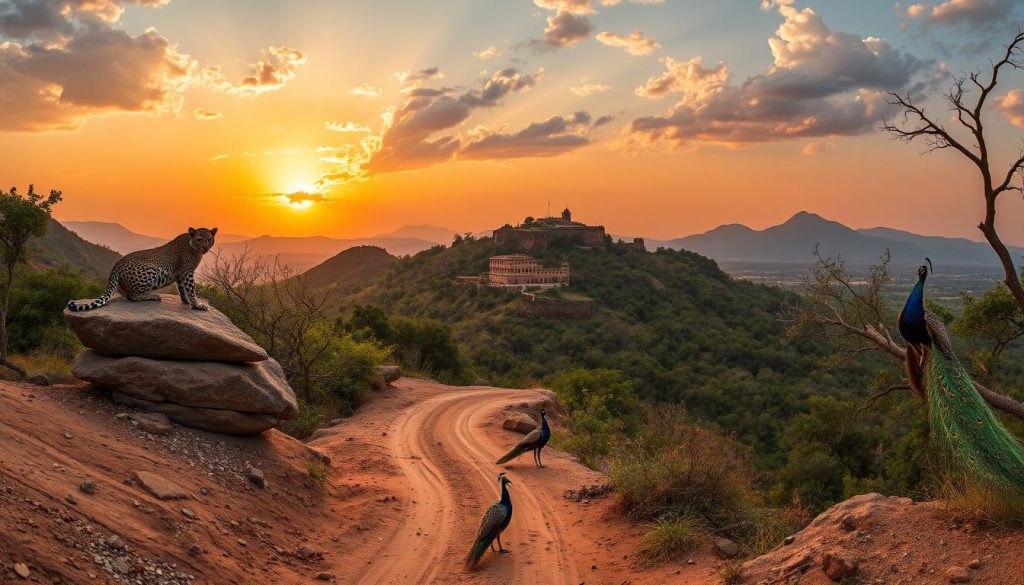
Safari Adventures
Going on a Kumbhalgarh Safari, visitors see many animals up close. The sanctuary is spread over 578 square kilometers. It offers jeep safaris and treks. Guests might see leopards, the Indian Wolf, and different deer types. These safaris enhance the wildlife spotting adventure and are fun for everyone.
Endangered Species
This place works hard to protect species that are in danger. The Indian Leopard and many vulnerable animals live here freely. The goal is to keep their homes safe for them and future generations. This shows the sanctuary’s commitment to saving these amazing animals.
| Feature | Details |
|---|---|
| Location | Aravalli hills, near Udaipur |
| Safari Types | Jeep Safari, Trekking |
| Key Wildlife | Leopards, Indian Wolf, Various Deer Species |
| Area | 578 sq km |
| Conservation Focus | Endangered Species |
The Kumbhalgarh Wildlife Sanctuary is a key spot for biodiversity. It combines thrilling trips with important conservation work. It’s truly a hidden gem in Rajasthan for those who love nature and adventure.
Daying Ering Wildlife Sanctuary: An Alluvial Grassland Paradise
Daying Ering Wildlife Sanctuary is near Pasighat in Arunachal Pradesh. Surrounded by the Siang River, it’s perfect for wildlife lovers and researchers. The sanctuary has many islands formed by rivers, offering a special place for lots of species.
It’s known for being a great place for migratory birds. Every winter, birds from far places like Siberia and Mongolia come here. The sanctuary’s water attracts them, making a great show for bird watchers.
But it’s not just for birds. The sanctuary also has reptiles like king cobras and pythons. You’ll also find mammals. With the Eastern Himalayas nearby, it’s as beautiful as it is full of critters.
You can get there with a short drive from Pasighat. Arunachal Pradesh, where it’s located, is known for caring about animals. It has seven more sanctuaries and two national parks. Visit Daying Ering Wildlife Sanctuary in winter for the best time.
“Daying Ering Wildlife Sanctuary is a critical habitat not only for migratory birds but also supports an astonishing array of alluvial grassland ecosystems and numerous animal species. It’s a must-visit for anyone passionate about wildlife conservation.” – Expert Naturalist
This sanctuary is super important for alluvial grassland ecosystems. With its natural beauty and importance to nature, Daying Ering Wildlife Sanctuary is a real gem that’s worth exploring.
Gautala Autramghat Sanctuary: Maharashtra’s Hidden Wonder
Situated near Aurangabad, Gautala Autramghat Sanctuary is a hidden gem. It is surrounded by the Satmala and Ajantha hills of the Western Ghats. The sanctuary offers unique and thrilling experiences.
Here, nature lovers can explore its rich biodiversity. They can also discover various unique wildlife habitats.
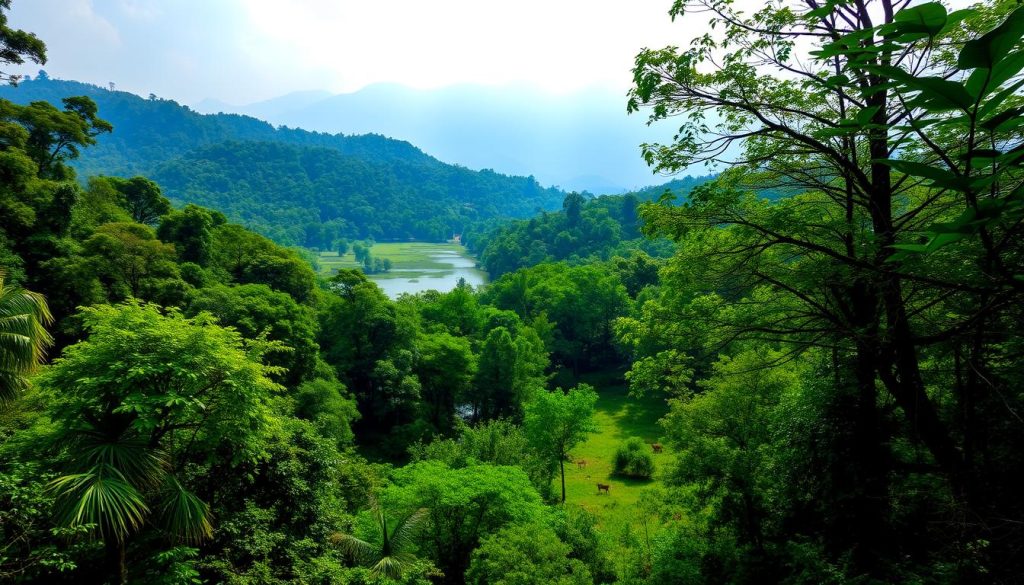
Floral and Faunal Diversity
The sanctuary has dry deciduous forests and vast grasslands. These areas are home to many rare plants and animals. Visitors might see jungle cats, chinkaras, and even leopards among others.
This variety makes it a top spot for those exploring Maharashtra. It’s truly a place of rich biodiversity.
Wildlife Watching
Wildlife fans will love Gautala Autramghat Sanctuary. It offers many chances for seeing animals. People can also enjoy bird watching and see unique plants.
Plus, there are activities like trekking and rock climbing. Each visit here is an adventure.
Accessibility
This sanctuary is easy to reach from Aurangabad. It’s great for both local and global visitors. The best time to visit is from January to March.
First-time guests will find it easy to explore this hidden treasure. It welcomes more explorers to experience its wonders.
For more information on unexplored wildlife sanctuaries in India, check out this comprehensive guide.
Unexplored Wildlife Sanctuaries in India: Hidden Treasures
India has amazing wildlife sanctuaries, full of life and beauty. These places have rough lands, thick forests, and lots of animals. They captivate anyone who loves nature. These lesser-known sanctuaries show off ecosystems that are still pure. They also highlight India’s great natural heritage.
The Pilibhit Tiger Reserve became a tiger reserve in 2008. It’s a safe place for Bengal tigers. The Pobitora Wildlife Sanctuary has over 375 kinds of birds. It’s perfect for anyone who enjoys watching birds.
In Northeast India, the Ntangki National Park started in 1923. It shows India’s early efforts to save wildlife. It welcomes visitors with beautiful green views. The Nagzira Wildlife Sanctuary is home to 36 reptile species. This includes six that are in danger of disappearing.
The Coringa Wildlife Sanctuary is in the Godavari mangroves. It’s named after Coringa village. This place is home to many species. It makes India’s coastal areas more beautiful.
Seeing India’s wild side means going to quiet spots. The Tadoba Andhari Tiger Reserve in Maharashtra is well-liked. But the Dandeli Wildlife Sanctuary in Karnataka has a huge variety of plants and animals. The Interview Island Wildlife Sanctuary in Andaman has been protecting elephants since 1985. They don’t allow night trips. This keeps the elephants safe.
India’s wildlife sanctuaries cover over 514 places. Karnataka and Maharashtra are at the top for having many of these. The Dehing Patkai Wildlife Sanctuary in Assam is known for its 300 bird species. The Tal Chhapar Wildlife Sanctuary in Rajasthan has Indian antelope blackbucks. It also has a landscape like a savanna. Each sanctuary has its own story of nature’s wealth.
| Wildlife Sanctuary | Special Features |
|---|---|
| Pilibhit Tiger Reserve | Declared a tiger reserve in 2008 |
| Pobitora Wildlife Sanctuary | Home to over 375 species of birds |
| Ntangki National Park | Established in 1923 |
| Nagzira Wildlife Sanctuary | Houses 36 species of reptiles, including six endangered |
| Coringa Wildlife Sanctuary | Located in the Godavari mangroves, named after the village of Coringa |
| Interview Island Wildlife Sanctuary | Established in 1985, focuses on elephant protection, prohibits night trips |
To love nature, try visiting India’s less known sanctuaries. They let you see the untouched wild beauty of India. You’ll meet different, amazing wildlife there.
Mollem National Park: Goa’s Exotic Wildlife Retreat
Mollem National Park is in Goa. It covers a huge 240 square kilometers. It’s a big part of Goa’s natural beauty. It also offers fun activities like trekking and safaris.
Iconic Animals
The park has amazing wildlife. You can see rare black panthers here. You might also see Bengal tigers, leopards, and many birds. Watching these animals in the wild is awesome.
Visiting Tips
Want to make your visit better? Here are some tips:
- Best Time to Visit: The best time is from November to March. The weather is great for exploring and safaris then.
- Travel Recommendations: It’s a short drive from Panaji, Goa’s capital. It’s a neat side trip.
- Guided Tours: Taking guided tours can help you learn more. It also ups your chances of seeing cool animals.
Discover Mollem National Park. It’s one of Goa’s top spots. Enjoy the mix of peace and adventure here.
| Activities | Details |
|---|---|
| Trekking | Go on guided treks to Dudhsagar Waterfalls. It’s one of India’s tallest, falling over 300 meters. |
| Jungle Safari | Safaris boost your chances of seeing exotic animals. This includes Bengal tigers and black panthers. |
| Camping | Try camping in the park. It lets you get closer to nature. |
Cotigao Wildlife Sanctuary: Goa’s Lesser-Known Adventure Spot
Near Poinguinim town lies the Cotigao Wildlife Sanctuary. It’s a wonderful wild place in Goa, started in 1968. It offers unique offbeat wildlife experiences. It has thick trees, different plants, and many animals. It’s important for India’s nature.
This large sanctuary is perfect for nature fans and adventurers. They can see South Goa’s hidden beauty here. Many plants and animals live in this clean place.
Unique Vegetation
The sanctuary covers 105 square kilometers with very tall forests. Home to many plant types. It has rare herbs and medicinal plants. This spot is key for Goa’s nature variety.
Resident Species
Many special animals live here, like Sloth Bears and Indian Pangolins. You might see flying squirrels, slender lorises, and birds. It’s great for unique wildlife trips in Goa.
Goa has 1512 plant types, 275 bird kinds, over 60 reptile types, and 48 animal groups. It’s perfect for finding nature’s diversity. For more info, check this guide on Cotigao Wildlife Sanctuary.
| Sanctuary Name | Size (sq km) | Unique Features |
|---|---|---|
| Bondla Wildlife Sanctuary | 80 | Home to animals like sambar, Indian bison, wild boar |
| Bhagwan Mahaveer Sanctuary | 240 | Hosts diverse wildlife including tigers, giant squirrels, cobras |
| Cotigao Wildlife Sanctuary | 105 | Diverse flora and fauna, tall trees up to 100 feet |
Conclusion
In conclusion, India’s wildlife sanctuaries are a peek into its untouched natural beauty. Each place tells a story of conservation. This is key to saving these habitats. Birds fill West Bengal’s Buxa Tiger Reserve. Tigers roam Pench National Park in Madhya Pradesh. Their diversity is both amazing and deep.
These less known reserves are crucial for many animals. For example, Odisha’s Satkosia Gorge gives a home to rare crocodiles. Sikkim’s Khangchendzonga is where Snow Leopards and Red Pandas live. Pakke Tiger Reserve in Arunachal Pradesh is a birder’s paradise. It has more than 300 bird types. This shows the rich biodiversity of India’s hidden wildlife spots.
Traveling here is more than a trip; it’s a chance to help protect nature. Bhimgad Wildlife Sanctuary protects rare bats. The Andaman Islands are known for their butterflies. Visits to places like Tadoba Andhari Tiger Reserve or Barren Island show the importance of conservation. These places in India call for exploration and protection. They welcome everyone to discover and save their beauty.
FAQ
What are some unexplored wildlife sanctuaries in India?
India has many less-known wildlife places to explore. Places like Pilibhit Wildlife Sanctuary and Bhimgad Wildlife Sanctuary are just a few. Others include Nagzira Wildlife Sanctuary and Kumbhalgarh Wildlife Sanctuary. There’s also Daying Ering Wildlife Sanctuary, Gautala Autramghat Sanctuary, Mollem National Park, and Cotigao Wildlife Sanctuary.
What is special about Pilibhit Wildlife Sanctuary?
Pilibhit Wildlife Sanctuary is known for its unique grasslands. It’s a home for the Royal Bengal Tiger and many birds. Over 500 bird species and 2,000 plant types live here.
Which unique species can be found in Bhimgad Wildlife Sanctuary?
In Bhimgad Wildlife Sanctuary, you can find the rare Wroughton’s free-tailed bat. This place in the Western Ghats also has Gaurs and Wild Dogs. It’s rich in different plants and animals.
What kind of wildlife can visitors expect at Nagzira Wildlife Sanctuary?
At Nagzira Wildlife Sanctuary, you can see the Indian Bison and Bengal Tiger. There are over 160 bird types and 36 reptile kinds. It’s a wonderful natural place in Maharashtra.
What makes Kumbhalgarh Wildlife Sanctuary unique?
Kumbhalgarh Wildlife Sanctuary has rugged hills in the Aravallis. It’s a place where leopards and Indian Wolves live. Visitors can also enjoy safaris and see Kumbhalgarh Fort.
What kind of ecosystem does Daying Ering Wildlife Sanctuary have?
Daying Ering Wildlife Sanctuary is made of river islands. It has grasslands that attract migratory birds from Siberia. Reptiles and animals from the Eastern Himalayas live here too.
How can visitors reach Gautala Autramghat Sanctuary?
You can get to Gautala Autramghat Sanctuary from Aurangabad. It features dry forests and grasslands. You might see Jungle Cats and Chinkaras there.
What iconic animals can be spotted at Mollem National Park in Goa?
Mollem National Park is where you can see Black Panthers and Bengal Tigers. It’s part of Bhagwan Mahavir Sanctuary and loved by those visiting Goa for nature.
What makes Cotigao Wildlife Sanctuary a lesser-known adventure spot in Goa?
Cotigao Wildlife Sanctuary is a hidden adventure place with thick trees and diverse plants. It’s home to endangered animals like the Sloth Bear and Indian Pangolin. It’s a break from city life.
When is the best time to visit Nagzira Wildlife Sanctuary?
The best time for Nagzira Wildlife Sanctuary is outside the rainy season. It’s great for wildlife watching in the cooler months.
What attracts explorers to Bhimgad Wildlife Sanctuary?
Bhimgad Wildlife Sanctuary draws adventurers with its caves and natural forests. It’s a diverse place offering homes for many species. It’s perfect for nature-lovers and adventurers.
